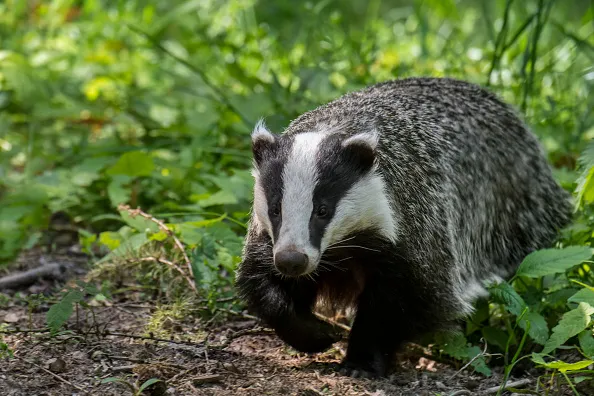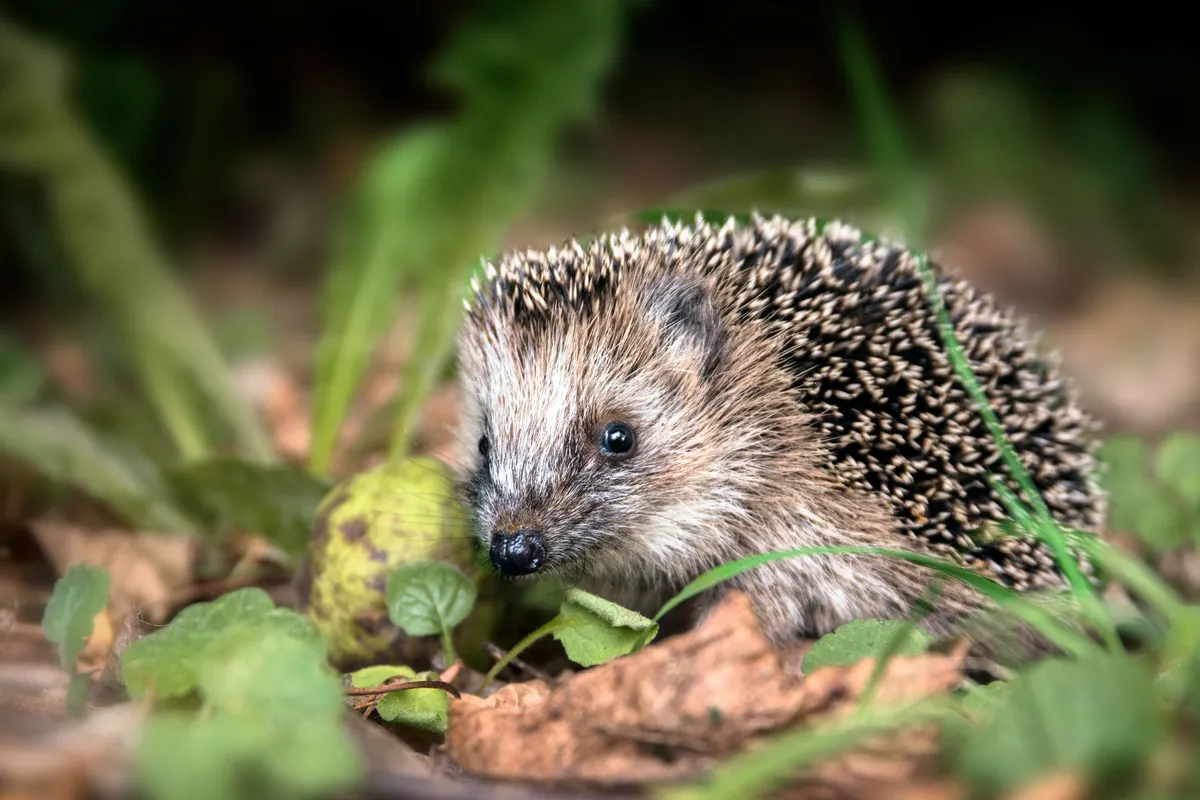Badgers, with their black and white snouts, are one of our most easily recognisable mammals. They are also familiar to us from children's books such as Wind in the Willows and Beatrix Potter. In recent decades badgers have faced a great deal of controversy, being implicated in the transmission of bTB (bovine tuberculosis) to cattle, which has led to cull of the animals in parts of the UK.
But how much do we really know about this distinctive and widespread countryside character?
Learn more about this British wild mammal with our guide to badgers, including where they live, diet and how to see in the wild.

Where do badgers live?
Badgers are most at home in woodlands or large hedgerows with access to water and open meadow. They are common on farmland but also roam into towns, parks and large gardens. They dig extensive burrows, often in hedge banks, with sleeping chambers called 'setts'. A single sett provides a home for a clan of badgers – an extended family of 3-14 individuals. A male badger is called a boar and a female a sow.

What do badgers eat?
Badgers are omnivores, meaning that they have a wide ranging diet that includes insects and other creatures as well as vegetation and fruit. Earthworms, which they dig up in grassland at night when the worms are usually closer to the surface, tend to make up the majority of a badgers diet and a single animal can eat 200 worms or more in a night. In autumn, hedgerow fruits and nuts including blackberries, plums and apples, tend to dominate. A badger will eat birds eggs and chicks if it finds a nest and its powerful front paws can tackle a hedgehog with ease. It will also eat mice and rabbits if given the chance.

Are badgers to blame for the decline of hedgehogs?
Because badgers eat hedgehogs and are their main natural predator in the UK, some people blame badgers for the hedgehog decline in Britain. However, hedgehog expert Hugh Warwick argues that other factors are to blame.

Essential badger facts
- Family: Mustelid (like stoats, weasels, otters and pine martens)
- Size: Similar to a cat but lighter, weighing around 10-12kg. Large males can reach to 90cm in length.
- Colour Distinctive black and white striped head; silver grey/black fur.
- Territory: Around 1.5km² but can occur at greater densities if food sources are good.
- Diet: Omnivorous, with a taste for earthworms, rodents, rabbits, birds and berries and other fruit.
When is the best time to spot badgers?
Badgers are mostly active at night when they feel safe but also when their prey is active. So to see a badger, settle quietly near a sett at dusk or dawn, when the badgers are emerging or returning to their daytime hideaways.
How long have badgers lived in Britain?
Paleontological evidence shows that badgers have been the British Isles for at least 250,000 years.
How many badgers are there in the UK?
A survey published by DEFRA found 72,000 social groups of badgers in England and Wales. Other estimates suggest the population may be 250,000-400,000 individuals in the whole of the UK. The UK has a quarter of the global population of the species.

Does the badger have any natural predators?
Not in the UK though in continental Europe bears and wolves may eat badger cubs. Some 45,000-50,000 badgers are killed on Britain’s roads every year.
Why are badgers being culled?
The government has licensed the culling of badgers to test whether the free-shooting of badgers is an effective culling method in preventing the spread of bovine tuberculosis (Btb) in cattle. A badger culling trial between 1998-2005 found that culling badgers within a controlled area could reduce the incidences of Btb in cattle.
How are the badgers culled?
In the scientific trial, 11,000 badgers were trapped in cages and killed over a seven year period in specific locations. To save money, the current badger cull relies on marksmen shooting the animals.
Does everyone agree that culling badgers will reduce Bovine tuberculosis (TB)?
No. Many of the scientists involved in the badger culling trial have expressed concern that shooting badgers rather than trapping is not effective and is inhumane. The Government and many farmers claim that culling is having a positive effect on the spread of TB but there are no scientific studies to back this up.

What about badger vaccination?
As of March 2020, the UK Government signalled that it would start to phase out badger culling in the UK and replace it with a vaccination program.
Environment Secretary George Eustice claimed: "The badger cull has led to a significant reduction in the disease as demonstrated by recent academic research and past studies.
"But no-one wants to continue the cull of this protected species indefinitely so, once the weight of disease in wildlife has been addressed, we will accelerate other elements of our strategy, including improved diagnostics and cattle vaccination."

How is the badger portrayed in popular culture?
In literature, the badger is both hero and villain. For example, in Beatrix Potter’s extensive works, the figure of Tommy Brock is an enemy of Peter Rabbit. However, Kenneth Grahame’s Wind in the Willows, Badger is a wise and respected leader of the woodland community.

